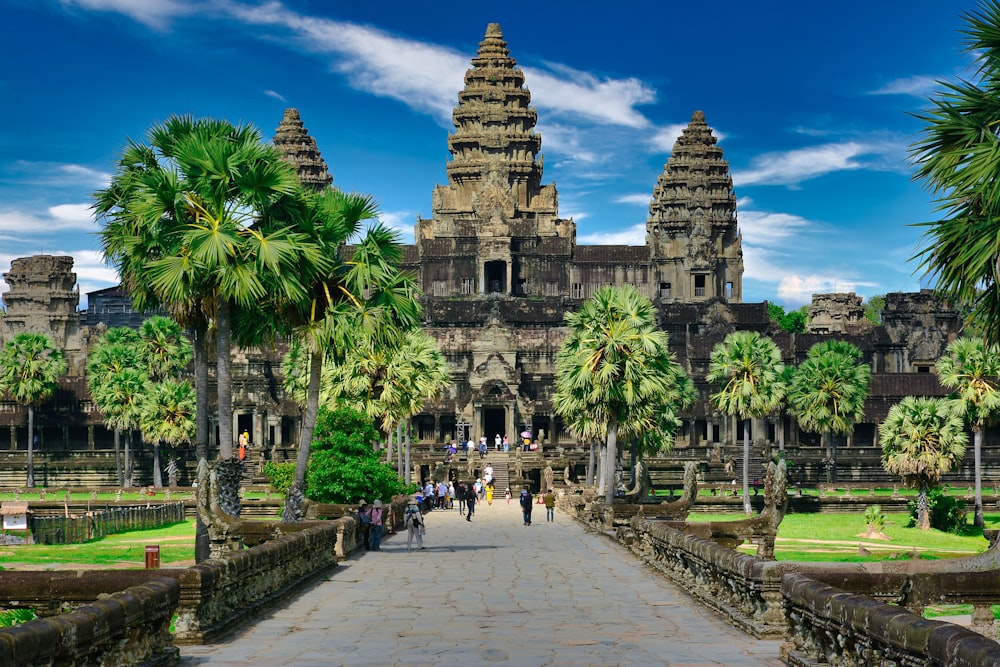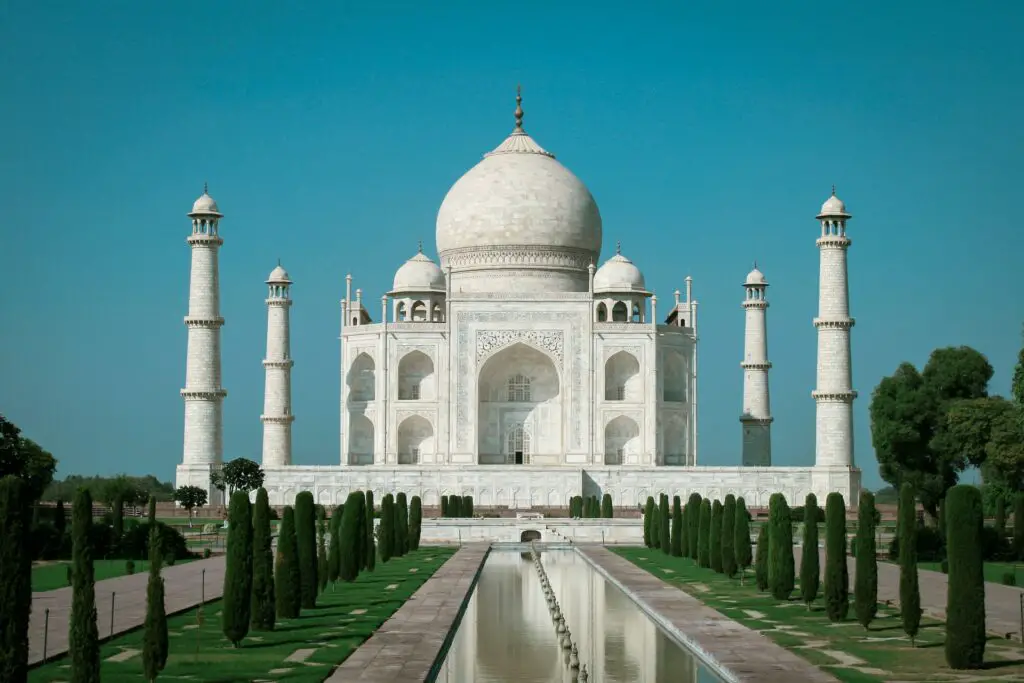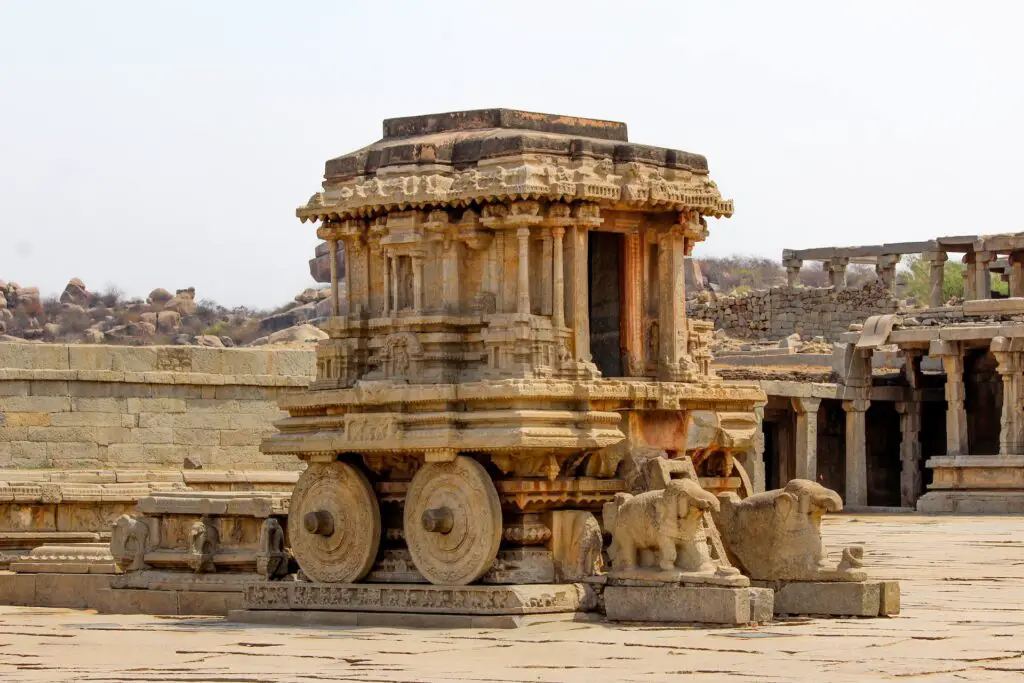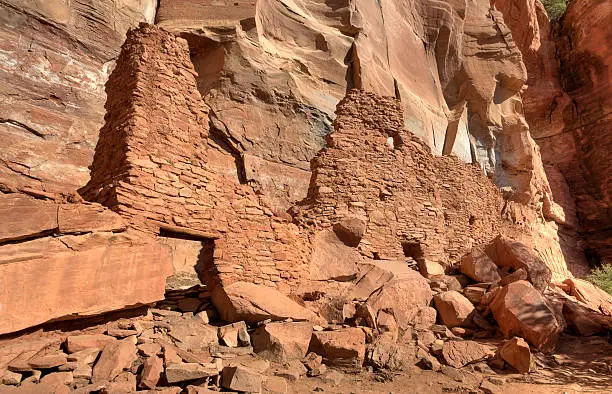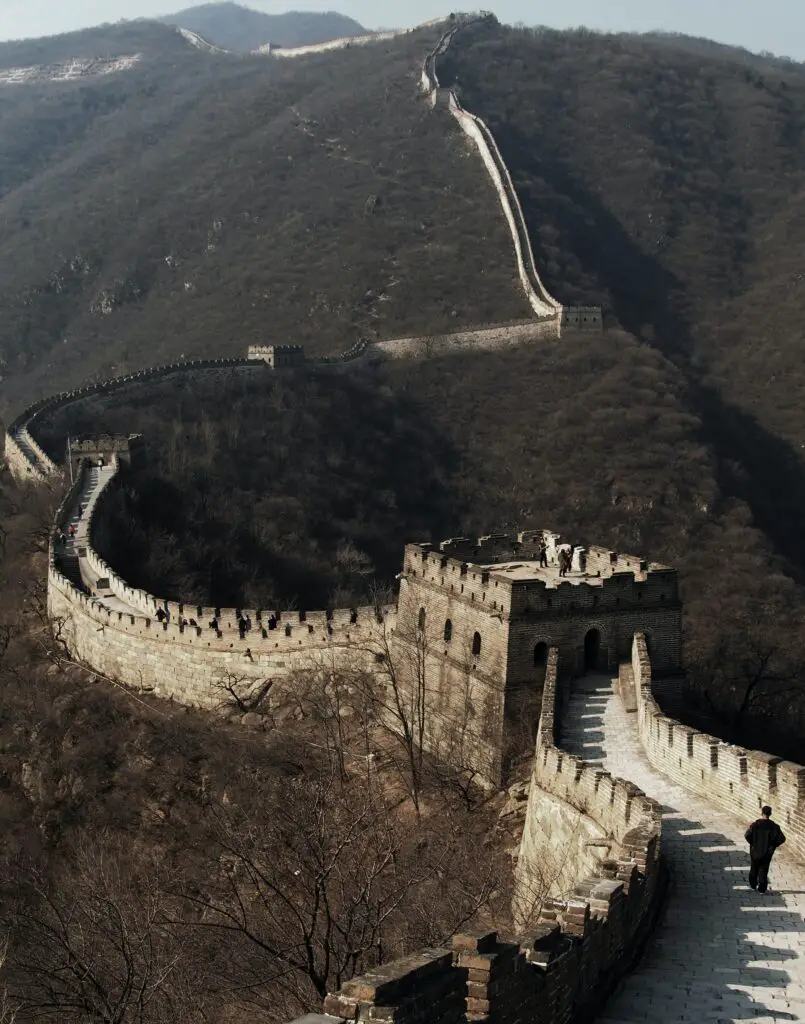Angkor Wat is a fascinating temple complex located in northern Cambodia, constructed by King Suryavarman II during 12th century. It evolved both Hindu- Buddhist temple during the 12th century. Initially the temple was dedicated to Hindu god Vishnu but later the temple was transferred as a Buddhist monument. Known as the largest religious structure or monument in the world, it stands as Guinness world record. Covered 400 acres of land labelled its intrinsic design, grandeur and extensive base reliefs.
Angkor Wat such a great human innovation and example of strong perseverance and dedication of the work done by the people making it most renowned cultural and historical site on earth. Temple mixed with its awe-inspiring architecture and the enchanting experience where visitors going to experience watching the sunrise from its temple complex. Today it continues to grab the attention of millions of visitors from around the globe. Today it is symbolized as sacred history and architectural marvelous to the whole world.
Suggested read; Hampi- A Living Heritage of Indian’s Golden Era.
History

Angkor Wat is an enormous Buddhist temple(in some places of the temple you will find Hindu God idols) established by the King Suryavarman II in the 12th century during the Khmer Empire. Angkor Wat was initially built as a Hindu temple and it is fully dedicated to the God Vishnu, but after 12th century, when the power of King Suryavarman declined, the later temple turned into a Buddhist monument in the 14th century. Spread across more than 400 acres of land considered as “Largest religious monument” in the world. In Khmer language Angkor means “Temple city”.
As we said before, the temple complex was built during the Khmer empire and it took approximately 30 years of time to finish this massive temple. Temple also gained much importance after being colonized by the French. They restored this ancient place in the early 1900 for tourism purposes. The Cambodian civil war was severely damaged during the rule of Khmer Roughe. Today you will see bullet holes in the outer layer of the walls happened at the time of the battles.
When the French took administration there were a lot of western visitors who came here to explore the beauty of Angkor Wat. Antonio de Madelena, a Portuguese traveler, visited in 1586. In the 1840s Angkor Wat was again discovered by the famous French explorer named Henri Mouhot, called “Grander than anything left to us by Greece or Rome” and spread this sentiment to the entire Europe and Western world.

After getting full Independence in 1953, Cambodia got full control over this temple. In 1992, the temple was recognized by the UNESCO World Heritage Site and recently added 8th wonders of the world. Every year the Temple receives 2 millions of visitors to enjoy its architectural beauties and sunrise views.
Architectures

Angkor Wat is known to this globe for its intrinsic designs and architectures. Showcasing stunning architecture and paintings making it prime example of Khmer architecture that blends a mixture of Hindu and Buddhist religious elements.

The Temple’s total architectural style is based on Khmer architecture, which had mastered the art of building by the late 12th century. The temple complex spans over 400 acres, the majority stands tall through the test and is surrounded by a moat. During that period temple construction was done by the bricks and laterite. Its attractive five towers represent Mount Meru, the mythical home of the gods, and the entire structure is designed to symbolize the universe.
Great Wall of China and its hidden truths.
Some of the highlighting things in Angkor Wat temple architecture;
- Broad Passageways are common in this temple throughout of entire temple complex.
- Temple contains Lotus bud shaped rodents and ogival shaped towers.
- The Walls in the temple complex are decorated and sculpted to represent the narrative of ancient stories.
- Bas reliefs
- Axial galleries in this temple are connected to enclosures in every part of the temple.
- Cruciform terraces featured along with the temple’s main axis, which is the main attraction in the whole temple.
Bunning Warehouse Logo and Taglines.
Most Important Elements under Angkor Wat temple
1. Gopura
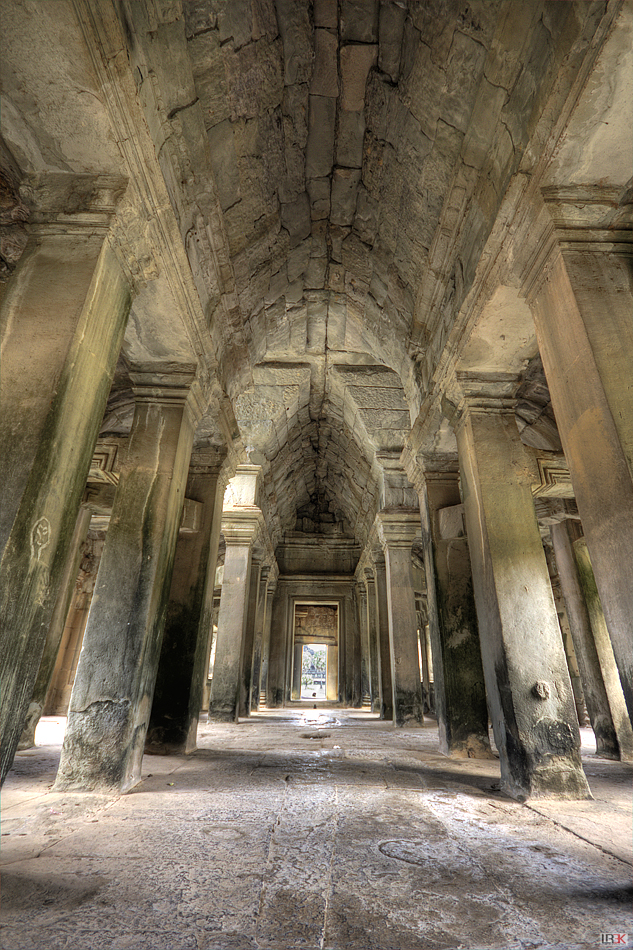
Also called as Tower, there are mainly 4 towers available inside the temple complex. Located on the eastern side, western side, the northern one and the southern one. Out of 4, Western side of the tower attracts many visitors due to its echoes and with proper structures and hides.
2. Access Points

Mainly there are 2 access points available for both enter to the temple and exit from temple complex. One west features sandstones and another one east features.
3. The Galleries

Angkor Wat galleries often called as “Elephant Gates”, they are not just named randomly, even their wide area where we can accommodate adult elephants.
Aer Lingus Irish retail company.
4. Decorations

Temples’ intrinsic decorations are worth exploring. Some of the phenomenal decorations within the temple include dancing figures, deities, pictures and small posts which face the eastern side of the wall. You will notice Lotus rosettes on the ceiling between pillars.
5. Large Scale of Base

Interesting architectural feature you can notice under Angkor Wat temple is large base reliefs. Its outer wall of the gallery contains base relief that depicts scenes from Hindu mythological stories like Ramayana and Mahabharata.
Beyond the Marble Walls; A Cultural Significance of Taj Mahal.
Temple Under Sunrise Experience
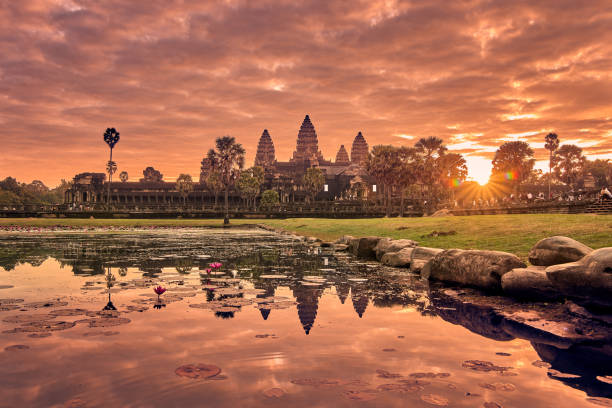
There is no doubt that Watching Angkor Wat temple with sunrise is an incredible experience. Before watching sunrise views you need to buy Ticket before 1 day prior, which is valid till the next date at 5 am.
Price range is $ 30 for one day, or else you can buy a 3 or 7 day pass for those who dislike the rush.
Between 4 am to 7 am Visitors get into the temple to watch the sunrise under the temple complex. People gather in front of the temple early in the morning to watch as the sun gradually illuminates the magnificent silhouette of the temple against the skyline. This creates an iconic view of 5 towers seen from the famous reflecting views. It creates a long lasting impression on visitors and the hub of photographers too. This Cambodian temple creates a mesmerizing environment and casts a golden glow over the temple.
Why Was it in News?

As we know, recently one more wonder added to the 8 Wonders of the World, that is Angkor Wat Temple. Previously 7 Wonders of the world were popular in the whole world. Angkor Wat’s cultural wonders not officially listed in the new 7 wonders of the world. But its historical significance, vastness of the temple, and architectural grandeur make it one of the new 8 wonders of the world.
Angkor Wat is officially added to the new 8 wonders of the world and has beaten Pompeii, Italy. Its outstanding buildings and projects gained its early recognitions. 7 wonders of the world were taken in the year 2007 through a worldwide pool led by the Swiss corporation of new 7 wonders Foundations. This foundation is taken from man-made marvels along with evidence of human creativity, innovations, marvelous engineering.
Ticket Price in Angkor Wat Temple

Angkor Wat entry fees can be purchased at the official ticket center situated just 4 km away from Siem Reap town, which is open daily from 4:30 am to 7:30 pm.
1 day pass – $ 37 US dollar
3 days pass- $ 62 US dollar (Valid for 10 days)
7 days pass- $ 72 US dollar (Valid for 30 day)
One interesting fact here is, every $2 US in the entrance fees is fully contributed to Kantha Bopha Children’s hospital funds.
Click here to Buy Ticket Online.
Visiting Hours

Most of the temple complex and park can be visited between 7:30 am to 5:30 pm. But if you want to see the sunrise you have to purchase one the day before and you should enter inside the temple before sunrise.
Best Time to Visit Angkor Wat
Visiting Angkor Wat is purely based on the Cambodia weather conditions. You need to plan your trip during cool, dry season from Early November to Mid February. These months includes clear skies and ideal weather to watch sunrise and sunset. Additionally, visitors also enjoy lower crowds and hotels available at very budget friendly rates.
My Parting Thoughts
Today Angkor Wat temple stands as a testament to the ancient Khmer civilization and remains as an architectural monument in the hearts of millions of visitors. Never miss to visit if you already saw the rest of the 7 wonders of the world, surely this temple will not going to disappoint you in the same charm and vibe. Such a great cultural destination for history art lovers who wish to seek to know the history, culture, and architectural marvels in Asian continent.
Q: Angkor Wat is a Hindu Temple?

A: Initially Angkor Wat temple built and designed as a Hindu temples, during the time Suryavarman II. But after 12th century temple considered as Buddhist site.
Q: Who built Angkor Wat temple?
A: Angkor Wat temple built by the Khmer dynasty king Suryavarma II during 12th century.
Q: Angkor Wat is located in which country?

A: Angkor Wat is an enormous Buddhist temple complex located in Krong Siem Reap, Northern Cambodia.

